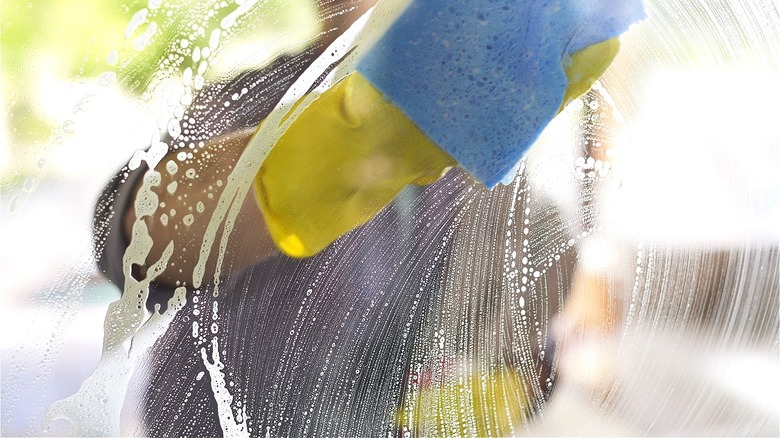The Big Mistake You're Likely Making When Cleaning Your Windows
Washing windows seems simple enough on paper. After all, all you need is a little soap, water, and a rag. But as it turns out, there are rules to keep in mind if you want to get a streak-free finish. For example, it's best to do so on an overcast day so the water doesn't evaporate before the product, leaving streaks on the glass. It's also smart to use microfiber cloths or squeegees to avoid leaving lint or lines behind. Lastly, it's best to avoid the common mistake of wiping your windows in a circular motion. Doing so is the fastest way to create a streaky finish; instead, you should wipe them in a window-wiper motion — from side to side.
Cleaning your windows in circles ultimately leads to streaks because you're consistently smudging areas you've already cleaned. Since you are moving erratically, your wipes overlap, constantly undoing what you just finished. So, to ensure fewer streaks (and less frustration), start wiping your windows horizontally.
The most efficient way to wash your windows
Cleaning windows doesn't have to turn into rocket science, but if you're tired of constantly chasing down streaks, it might benefit you to ditch the circular wipes and instead try side-to-side motions. To do so, first wipe down the window pane horizontally, taking off the worst of the dust and grime. Then as a touch-up, wipe it vertically, up and down. Make sure you run the cloth along the edges of the window pane and in the corners, grabbing any lingering dust. This technique is beneficial because your hand motions mimic the shape of the window itself, and it also reduces the chance of static cling.
Circular motions often generate static electricity buildup, which might not cause streaks, but it does attract more dust to the glass. And that's the last thing you want if you're going through the laborious task of cleaning your windows all day.
